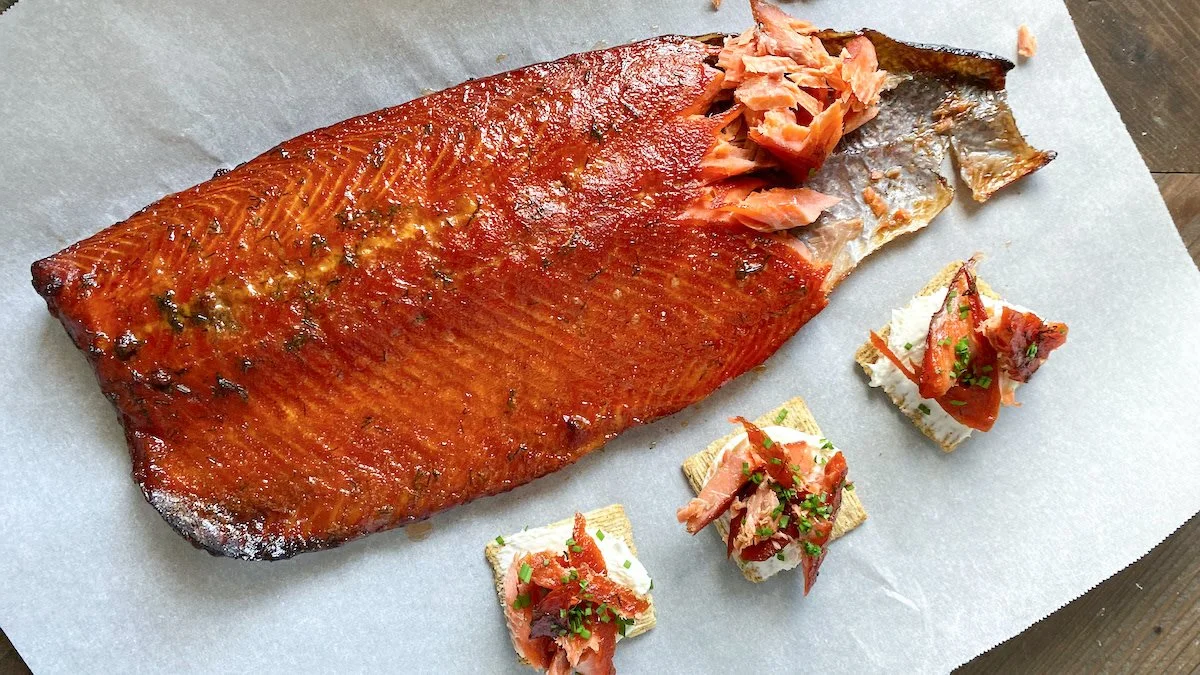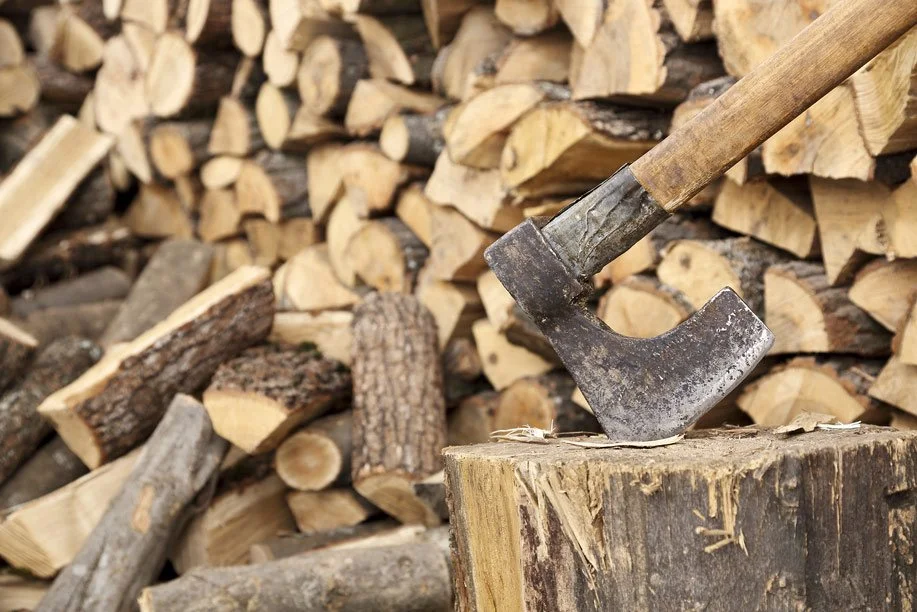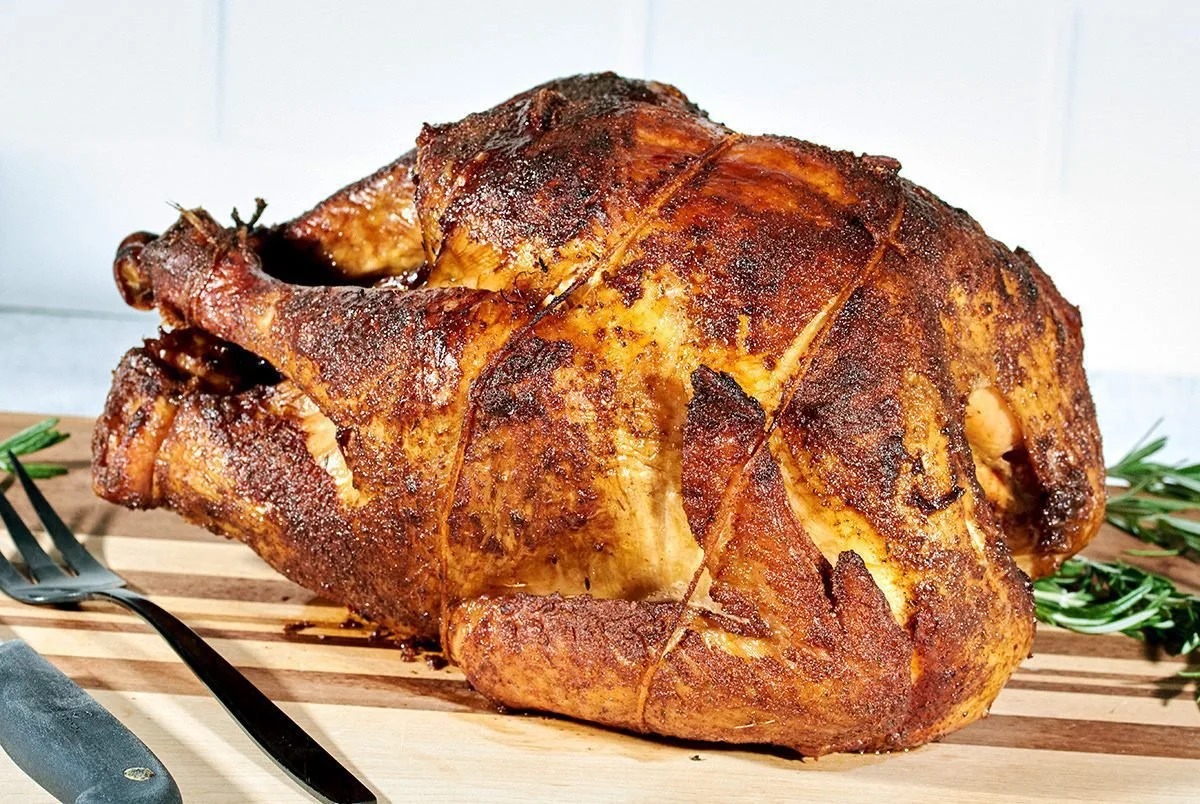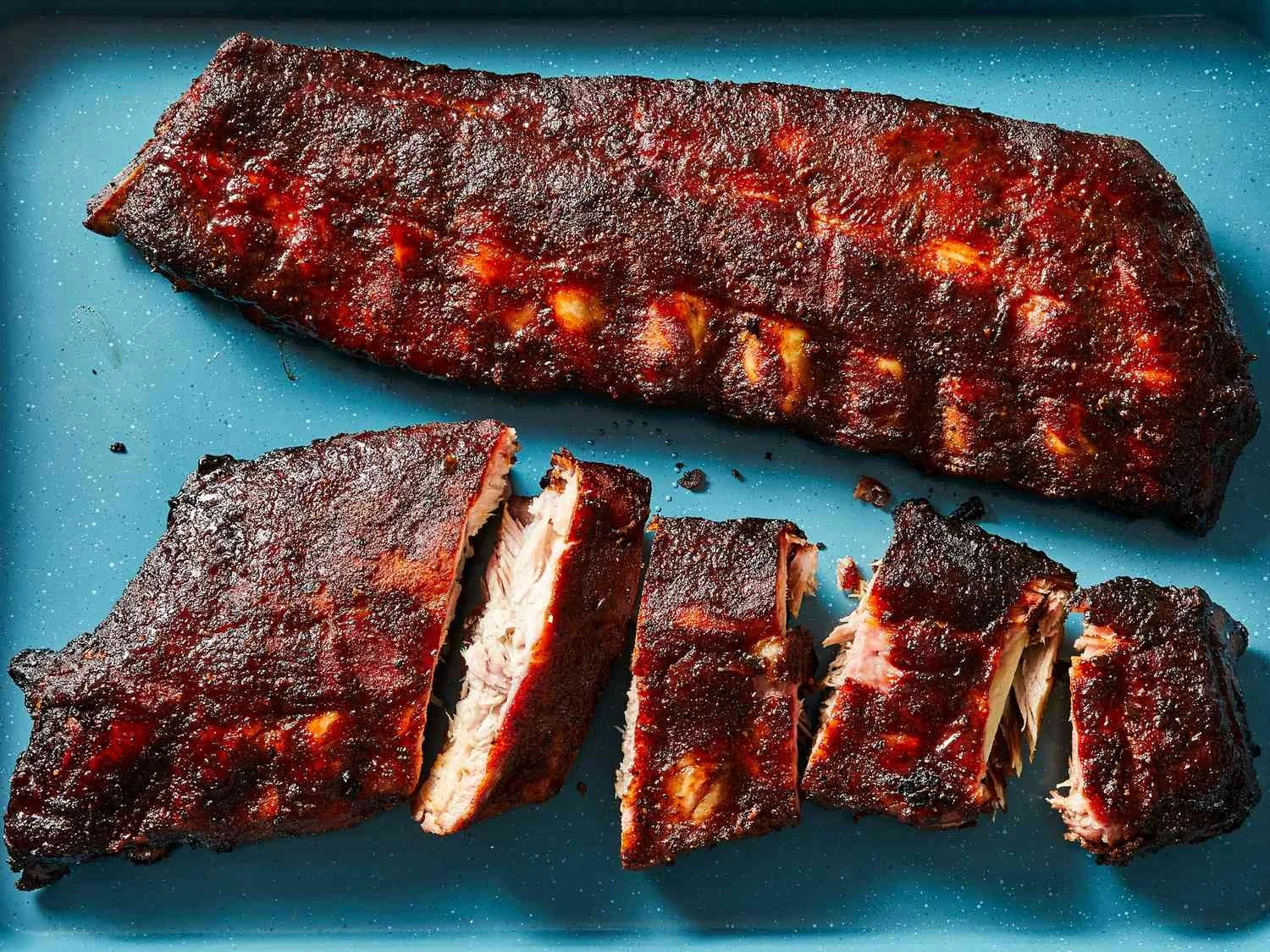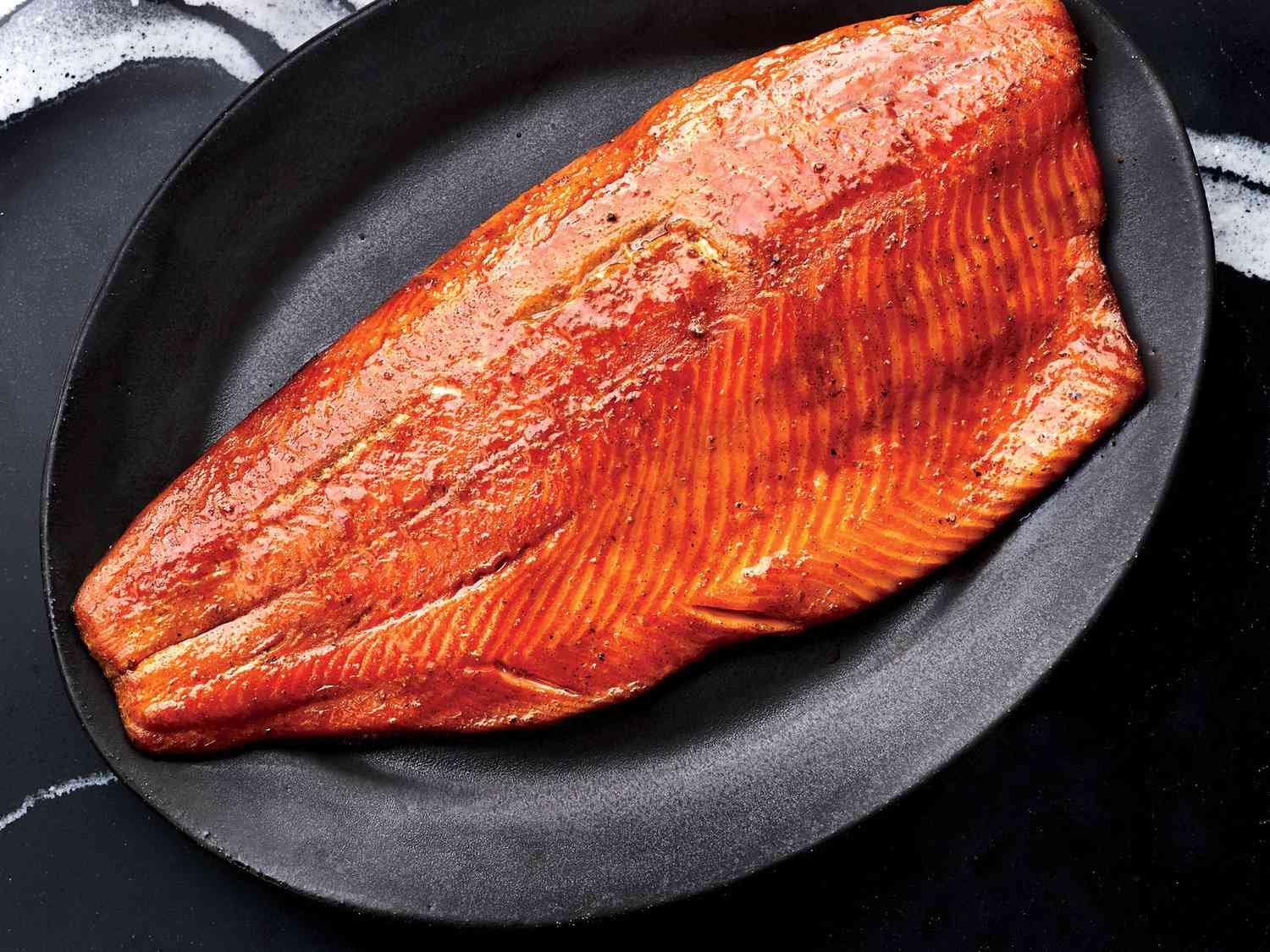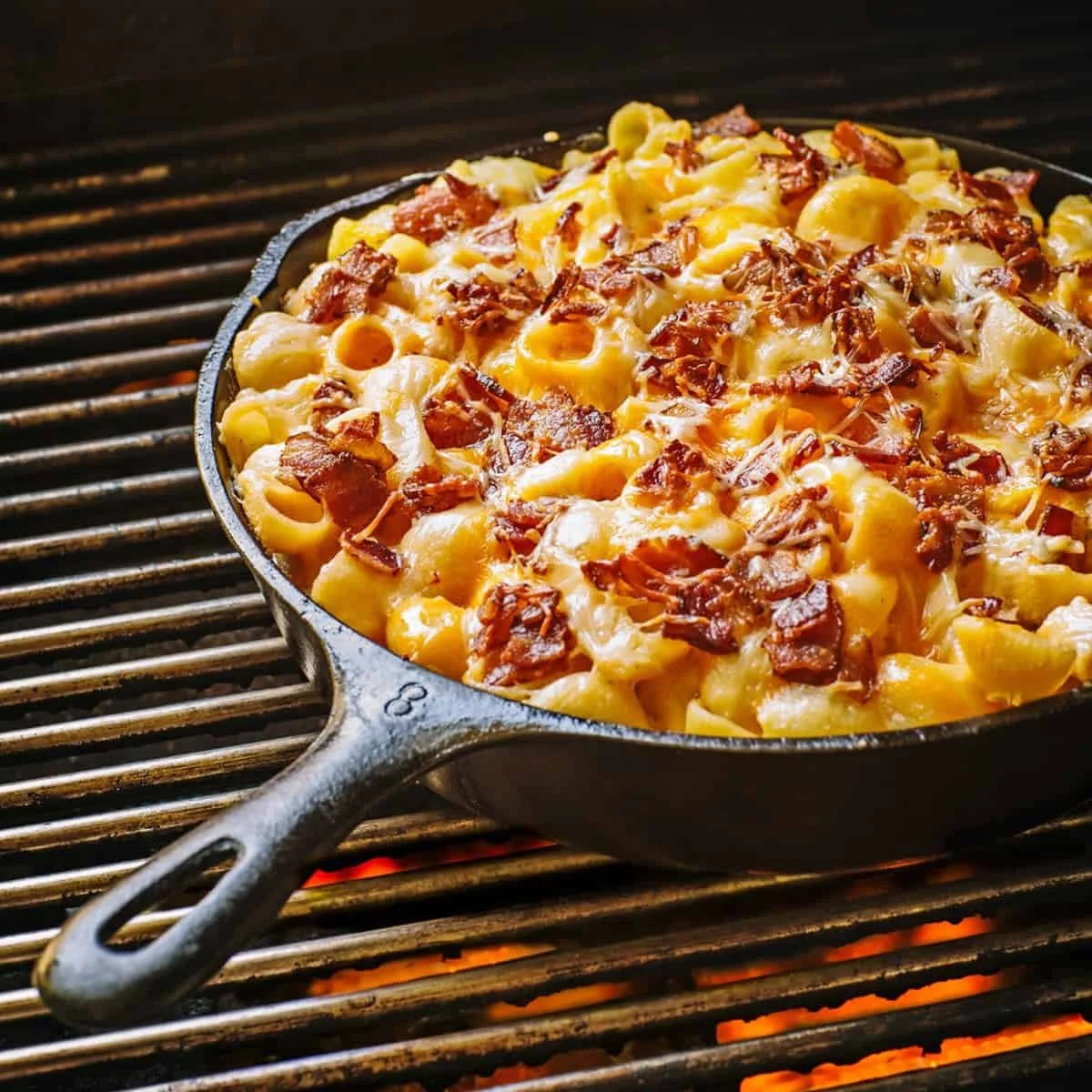Best Smoker Recipes: Top Dishes to Impress and Satisfy
Discover > Texas Recipes > Best Smoker Recipes: Top Dishes to Impress and Satisfy
Smoked dishes are a delicious and versatile way to cook. This article showcases some of the finest smoker recipes, guaranteed to impress both novice and experienced pitmasters alike. The recipes cover a wide range of tastes and preferences, catering to diverse palates and dietary needs.
So, fire up the smoker and embark on a quest to discover the best smoked dishes that are sure to tantalize the taste buds of family and friends. From tender briskets to perfectly smoked salmon, (What wine goes well with salmon?) there is something for everyone to enjoy.
Understanding Smoker Recipes
Smoker recipes use a slow, gentle cooking process to infuse food with rich, smoky flavors. (What wine goes well with smoky flavors?) The type of smoker, wood chips, and seasoning all play a role in creating delicious dishes. With practice, anyone can create their own unique smoker recipes.
You can't go wrong with buying hickory, oak, and cherry wood chips online – it's hassle-free and efficient.
Choosing the Right Meat
Choosing the right meat is essential for making delicious smoker recipes. There are many factors to consider, such as the type of meat, the cut of meat, and the desired flavor profile.
Poultry
When it comes to smoking poultry, the best choices are chicken and turkey (What wine goes well with turkey?). These meats have a mild flavor that pairs well with smoky flavors. Always choose fresh, high-quality poultry for smoking, as frozen poultry can be dry and tough when cooked. Opt for organic or free-range birds when possible, as they tend to have better flavor and texture.
Chicken
Whole chickens or chicken pieces, such as thighs or wings, are great for smoking. Keep the skin on to prevent the meat from drying out.
Smoked chicken thighs (What wine goes well with chicken thighs?) is a delicious and versatile dish that can be enjoyed on its own or as part of a larger meal. Chicken thighs are a particularly good choice for smoking, as they are naturally moist and flavorful. Chicken wings are also a popular choice for smoking, and they can be made crispy and flavorful by cooking them over high heat.
Turkey
Smaller turkeys, around 12-14 pounds, are best for smoking. Choose a whole turkey or turkey breast for a delicious smoked meal.
Smoked turkey is a classic dish that is perfect for Thanksgiving or any other special occasion. Turkey breast is a particularly good choice for smoking, as it is lean and flavorful.
No matter what poultry cut you choose, smoking it will result in a delicious and flavorful dish that is sure to please your guests.
Beef
Smoking beef requires a balance between fat and lean meat for the best flavor and tenderness. The low and slow cooking method of smoking allows the meat's connective tissue to break down, resulting in juicy and tender meat.
Brisket
A popular choice for smoking, a good brisket should have a thick layer of fat to keep the meat moist during the smoking process. Smoked beef brisket is a classic dish that is known for its rich flavor and tender texture.
Ribs
Beef back ribs or short ribs are best for smoking. Look for ribs with plenty of meat and marbling for juicy and tender results. Smoked beef ribs are another popular dish that is known for its smoky flavor and fall-off-the-bone tenderness.
Prime Rib
A bone-in rib roast is a great choice for smoking. It has a good balance of fat and lean meat, and it will become juicy and tender when smoked. Smoked prime rib is a luxurious dish that is perfect for special occasions.
No matter what beef cut you choose, smoking it will result in a juicy and tender roast that is sure to please your guests.
Pork
As a rule, pork lends itself well to smoking due to its natural marbling and fat content. These factors ensure that the meat stays moist and tender throughout the cooking process.
Pork Shoulder
Often referred to as a "Boston butt" or "picnic roast," pork shoulder is ideal for pulled pork recipes. This cut requires a long, slow cooking process to break down the connective tissues and release its full flavor potential.
Ribs
Pork ribs, (What wine goes well with pork ribs?) such as baby back ribs or spare ribs, are a classic choice for smoking. The tender meat and strong flavor make them a favorite among many barbecue enthusiasts.
Pork Belly
Smoked pork belly (What wine goes well with pork belly?) is a delicious and fatty cut of meat that is perfect for smoking. It can be cooked slowly over low heat to render the fat and make it tender and flavorful, or it can be cooked quickly over high heat to create a crispy exterior.
Pork Loin
Smoked pork loin is a lean cut of meat that is perfect for smoking. It can be cooked slowly over low heat to keep it moist and tender, or it can be cooked quickly over high heat to create a juicy and flavorful roast.
No matter what pork cut you choose, smoking it will result in a delicious and flavorful dish that is sure to please your guests.
Fish
Fish can also be smoked, resulting in a unique and delicious flavor profile. The key is to select fish that are firm and oily.
Salmon
Cold-smoked salmon or hot-smoked salmon are both excellent choices for smoking. The fish's oily nature ensures that it will remain moist and tender during the smoking process.
Tuna
A firm, dense fish like tuna (What wine goes well with tuna?) is perfect for smoking. Choose a high-quality piece with good marbling to ensure maximum flavor.
No matter what type of meat you choose, smoking it will result in a delicious and flavorful dish that is sure to please your guests.
Utilizing Seasonings and Marinades
Seasonings and marinades can be used to enhance the flavor of smoked meats (What wine goes well with smoked meats?). They can also help to tenderize the meat and prevent it from drying out during the smoking process.
Spices
Utilizing spices in smoker recipes can greatly enhance the flavors of your meat. Some common spices in smoking include paprika, cayenne pepper, and black pepper. To get the best results, it's important to:
Choose fresh, high-quality spices for the best flavor.
Apply spices evenly to the meat, ensuring all surfaces are covered.
Allow the spices to sit on the meat for at least 30 minutes before smoking.
Some popular spice blends for smoking include:
All-purpose rub: equal parts salt, pepper, paprika, and garlic powder (how long does garlic powder last?)
Spicy rub: equal parts chili powder, cayenne pepper, and black pepper
Online shopping for paprika, cayenne pepper, and black pepper is the smart choice for a seamless transaction.
Herbs
Herbs also play an important role in enhancing the flavors of smoked meats. Incorporating herbs like rosemary, thyme, and oregano can create a more complex and unique flavor profile. To use herbs effectively in your smoker recipes, consider the following tips:
Use dried herbs (how long do dried herbs last?) for better adherence to the meat and a more concentrated flavor.
Crush or finely chop the herbs before applying.
Coat the meat evenly with the herbs, and allow them to sit on the meat for at least 30 minutes before smoking.
Some herb combinations to try include:
Mediterranean mix: equal parts oregano, thyme, and basil
Rustic mix: equal parts rosemary, sage, and thyme
Marinades
Marinades are an excellent way to add extra flavor and moisture to your smoked meats. A good marinade consists of an acidic component (such as vinegar or citrus juice), a fat component (such as oil or yogurt), and flavorings (like herbs and spices). Some helpful tips when marinating smoking meats include:
Marinate your meat for at least 2-4 hours, or even overnight for deeper flavor.
Ensure the marinade covers all parts of the meat.
Remove excess marinade before smoking.
Here are a couple of simple marinades to try:
Citrus marinade: mix equal parts lemon juice, olive oil, and a combination of your favorite herbs and spices.
Spicy marinade: mix equal parts vinegar, oil, and hot sauce (how long does hot sauce last?) or chili paste, along with your preferred spices.
Mastering Smoking Techniques
Mastering smoking techniques is essential for creating delicious and flavorful smoked meats. There are many factors to consider, such as the type of smoker, the temperature, and the cooking time.
Low and Slow
The low and slow technique involves cooking the food at a relatively low temperature for an extended period of time, which helps to break down the connective tissues and tenderize meats. This method is best for large, tough cuts of meat such as brisket, pork shoulder, or ribs. Ideal temperature ranges for this technique are typically between 225°F to 250°F (107°C to 121°C).
Key tips for low and slow smoking:
Use a digital meat thermometer to ensure consistent temperature.
Keep the smoker's water pan full to maintain proper humidity.
Avoid opening the lid too often, as heat and smoke can escape.
Hot and Fast
Hot and Fast smoking involves cooking the food at higher temperatures, usually between 325°F to 350°F (163°C to 177°C), for a shorter period of time. This method is suitable for smaller cuts of meat, poultry, and fish that do not require as much time to break down and tenderize.
Benefits of hot and fast smoking:
Quicker cook times, making it a more manageable option for some cooks.
Tends to retain more moisture, resulting in juicier meats.
Cold Smoking
Cold smoking is a technique where food is exposed to smoke without any heat, which allows it to absorb the smoky flavors without cooking. Cold smoking is typically done at temperatures below 85°F (29°C). It is commonly used for foods like cheese, nuts (how long do nuts last?), and cured meats (What wine goes well with cured meats?) such as bacon or salmon.
Cold smoking precautions:
Ensure proper food safety by following the manufacturer's guidelines.
Cold smoking should be done with well-ventilated spaces, as the lack of heat can produce high levels of CO (carbon monoxide).
Types of Wood for Smoking
The type of wood used for smoking can have a big impact on the flavor of the meat, so it is important to choose the right wood for the desired flavor profile.
Hardwood
Hardwood, such as oak, hickory, and maple, is a popular choice for smoking because it burns slow and steady, imparting a robust, flavorful smoke that penetrates the meat deeply. Oak is particularly versatile and works well with a variety of meats, including beef, pork, and poultry.
Hickory, on the other hand, has a distinct bacon-like flavor that enhances the taste of pork, and it's especially suitable for smoking ribs and bacon. Maple wood offers a milder, sweeter smoke that pairs well with pork and poultry, particularly when you're looking for nuanced flavors.
Some common hardwoods for smoking:
Oak: Versatile, mild, and suitable for various meats
Hickory: Strong, bacon-like flavor, excellent for pork
Maple: Milder, sweet smoke, great for poultry and pork
Fruitwood
Fruitwood, such as apple, cherry, and peach, imparts a delicate, fruity aroma that complements lighter meats, such as poultry, fish, and some cuts of pork. Applewood smoke gives a sweet, fruity flavor that works well with chicken, turkey, and pork, especially when combined with a sweet glaze or rub.
Cherry wood has a unique and subtle sweetness that pairs exceptionally well with red meat, chicken, and turkey. Peach wood provides a mild, fruity smoke that is perfect for fish and poultry, without overwhelming the natural flavors of the meat.
Some popular fruitwoods for smoking:
Apple: Sweet, delicate, and versatile, suitable for poultry and pork
Cherry: Subtle sweetness, complements red meats and poultry
Peach: Mild, fruity smoke, ideal for fish and poultry
Safety Measures in Smoking
When preparing and enjoying smoker recipes, it is essential to follow some safety measures to ensure a safe and enjoyable experience. Smoking meats and other foods requires attention to detail and adherence to these safety protocols.
Always start by choosing a safe and stable location for your smoker. It should be placed on a level surface, away from any flammable materials, and in an area that is well-ventilated. Never operate your smoker inside or in a confined space, as the smoke can become hazardous.
Maintain proper food handling and sanitation practices to avoid cross-contamination. Wash your hands frequently when handling raw meat, and ensure that cutting boards, knives, and other utensils are cleaned thoroughly using hot soapy water. Use separate cutting boards for raw and cooked foods if possible.
While smoking, monitor the temperature of the smoker and the food itself. Ensure your smoker maintains a consistent and appropriate level of heat throughout the process. Check the internal temperature of the meat with a reliable thermometer to ensure it reaches the recommended safe temperature before consumption:
Poultry: 165°F (74°C)
Pork and beef: 145°F (63°C)
Fish: 145°F (63°C)
Properly maintain your smoker by cleaning and inspecting it regularly. Remove ash, grease, and other residue to keep your smoker operating efficiently and safely. Check the ignition system and fuel lines to ensure there are no leaks or potential hazards.
Exercise caution when opening the smoker and handling hot materials. Use heat-resistant gloves and appropriate tools, such as tongs and oven mitts, to protect your hands and arms from burns.
Finally, follow all manufacturer guidelines and recommendations for your specific smoker model. This can help prevent accidents and ensure that you have a safe and successful smoking experience.
When it comes to getting the best deals, buying electric smokers, charcoal smokers, or pellet smokers and meat thermometers online is the way to go.
You can take advantage of the wide variety of options when you shop for cleaning brushes, grill scrapers, smoker maintenance kits, smoker covers, smoker racks and heat-resistant gloves online.
Avoid the crowds and shop for marinade injectors, basting brushes, and marinade containers online from the comfort of your home.
Best Smoker Recipes
The best smoker recipes are those that make use of the right type of wood, cooking temperature, and smoking time to create delicious and flavorful dishes.
Smoked Turkey
Smoked turkey is a delicious twist on the traditional oven-roasted turkey. Start by brining the turkey for at least 24 hours in a mixture of water, salt, and various herbs. After brining, pat the turkey dry and apply a generous amount of your favorite dry rub.
When ready to cook, preheat your smoker to 225°F and set the turkey inside. Maintain a steady temperature, checking and adjusting every hour. Smoke the turkey until its internal temperature reaches 165°F, which usually takes about 6-8 hours.
Timings and temperature:
Brining: 24 hours
Smoking: 225°F
Internal temperature: 165°F
Save time and effort by ordering brining bags, containers, and ingredients like kosher salt (how long does kosher salt last?) and brown sugar online.
BBQ Ribs
BBQ ribs are a classic smoker recipe, combining tender meat with mouthwatering, smoky flavors.
Ingredients:
Pork ribs (baby back or spare ribs)
BBQ rub of your choice
BBQ sauce (homemade or store-bought)
Wood chips for smoking (e.g., hickory, cherry, oak)
Instructions:
Prepare Ribs: Remove the membrane from the back of the ribs. Apply a generous amount of BBQ rub to both sides of the ribs, ensuring an even coating.
Preheat Smoker: Preheat your smoker to a temperature of 225°F (107°C) and add your chosen wood chips for that smoky flavor.
Smoke Time: Place the seasoned ribs on the smoker grates and let them smoke for approximately 3-4 hours. Maintain a consistent temperature throughout.
Wrap in Foil (Optional): After a few hours, you can choose to wrap the ribs in aluminum foil with a bit of BBQ sauce and return them to the smoker. This helps to tenderize and infuse more flavor.
Glaze with Sauce: During the last 30 minutes of smoking, brush the ribs with your preferred BBQ sauce for a delectable glaze.
Check Doneness: Ribs are ready when they reach an internal temperature of about 195-203°F (91-95°C) and have a tender texture.
Rest and Serve: Allow the ribs to rest for a few minutes before slicing and serving. Don't forget extra BBQ sauce on the side for dipping!
Timing and Temperature:
Smoking: 225°F (107°C)
Smoke Time: 3-4 hours (adjust as needed)
Internal Temperature: 195-203°F (91-95°C)
Smoked Salmon
Smoked salmon is a delicate and flavorful dish, perfect for any occasion.
Ingredients:
Fresh salmon fillets
Brine mixture (water, brown sugar, kosher salt)
Wood chips for smoking (hickory, applewood, mesquite, etc.)
Instructions:
Brine Salmon: Soak salmon fillets in a mixture of water, brown sugar, and kosher salt for 1-2 hours.
Air-Dry: After brining, thoroughly dry the fillets and let them air-dry for up to an hour to form a pellicle.
Preheat Smoker: Set your smoker to 180°F (82°C).
Smoke Time: Smoke salmon fillets, skin-side down, for 2-3 hours or until the internal temperature reaches 145°F (63°C).
Savor: Serve your smoked salmon with your favorite accompaniments or enjoy it as is.
Timing and Temperature:
Brining: 1-2 hours
Smoking: 180°F (82°C)
Internal Temperature: 145°F (63°C)
Smoked Mac and Cheese
Elevate your comfort food game with smoked mac and cheese. Here's how:
Ingredients:
Macaroni pasta (how long does pasta last?)
Cheese sauce (homemade or store-bought)
Shredded cheese (cheddar, mozzarella, or your choice)
Wood chips for smoking (e.g., hickory, applewood, mesquite)
Instructions:
Cook Pasta: Boil macaroni until al dente, then drain.
Make Cheese Sauce: Prepare a creamy cheese sauce of your choice.
Mix Pasta and Sauce: Combine pasta and cheese sauce until coated.
Preheat Smoker: Set your smoker to 225°F (107°C) and choose wood chips for desired flavor.
Smoke Time: Smoke mac and cheese for 1-2 hours to infuse smoky goodness.
Serve Hot: Enjoy your smoky twist on classic comfort food!
Timing and Temperature:
Smoking Temp: 225°F (107°C)
Smoking Time: 1-2 hours (adjust to taste)
The Joy of Smoking
The versatile nature of smoker recipes provides a wide array of options for both beginners and experienced cooks. As one gains knowledge and confidence in smoking techniques, trying new combinations of flavors and ingredients can continually enhance the culinary experience.
Utilizing a smoker not only imparts a unique flavor to the dishes, but also allows for experimentation with various types of wood, rubs, and marinades, further diversifying the taste profiles. The key to mastering smoker recipes lies in patience, attention to detail, and learning from each smoking session.
Lastly, sharing these mouth-watering smoker recipes with family and friends adds to the joy of cooking and makes every meal a memorable occasion. So what are you waiting for? Start smoking today and discover the joy of this culinary art form!





